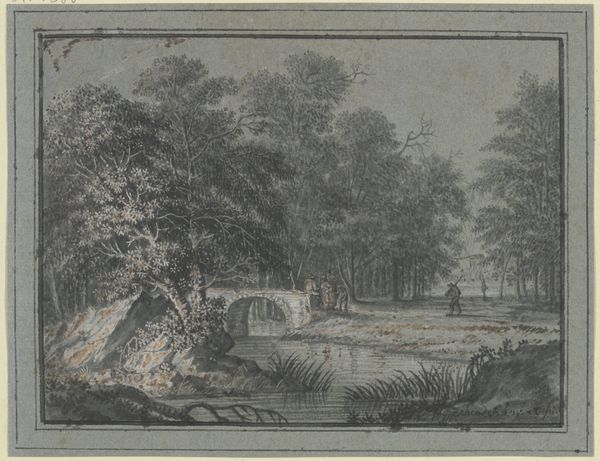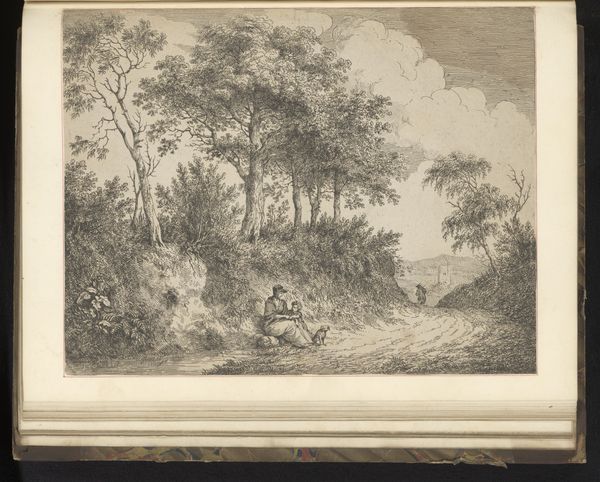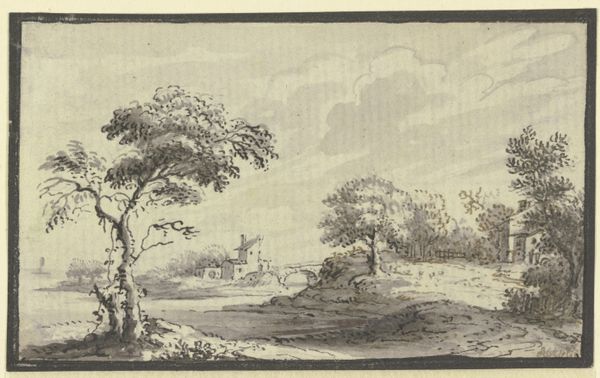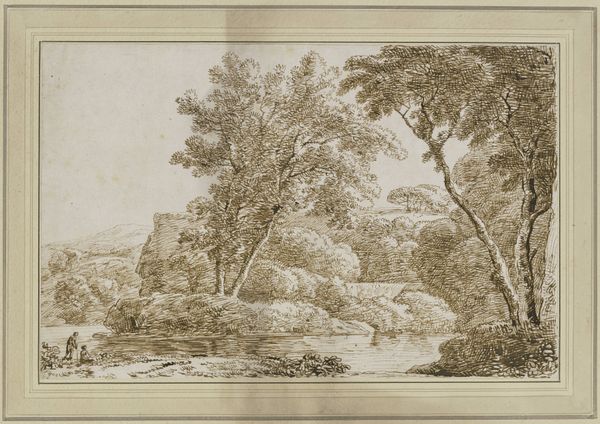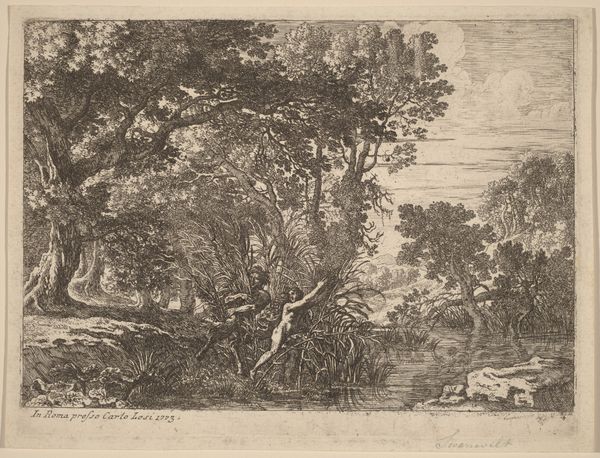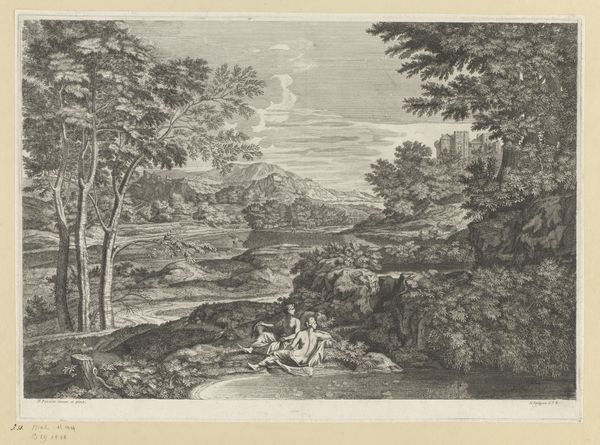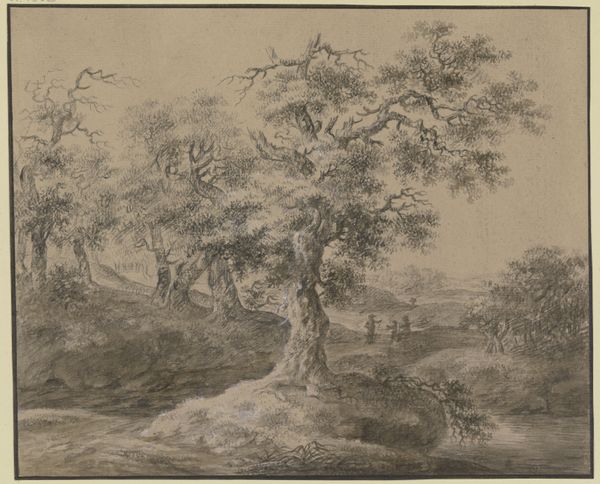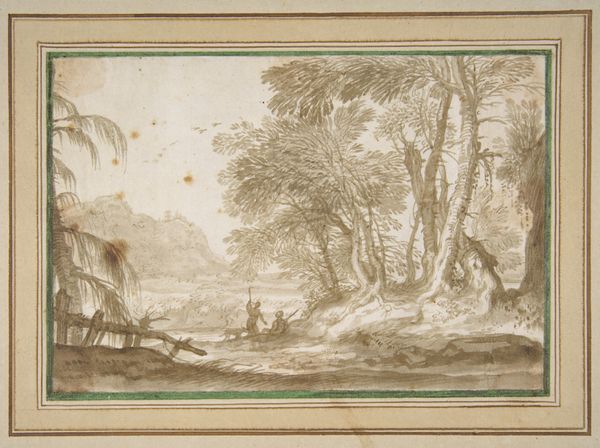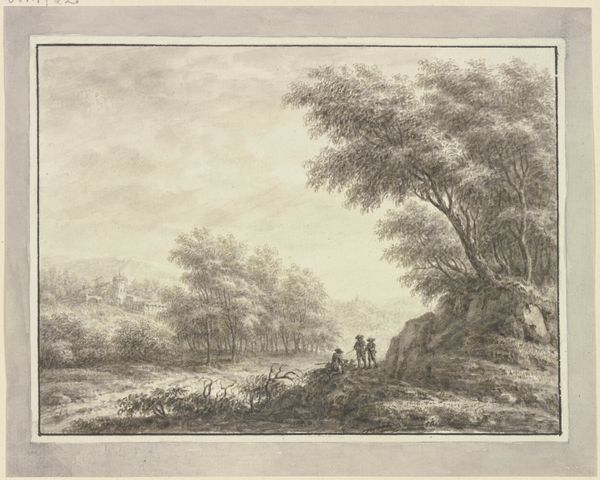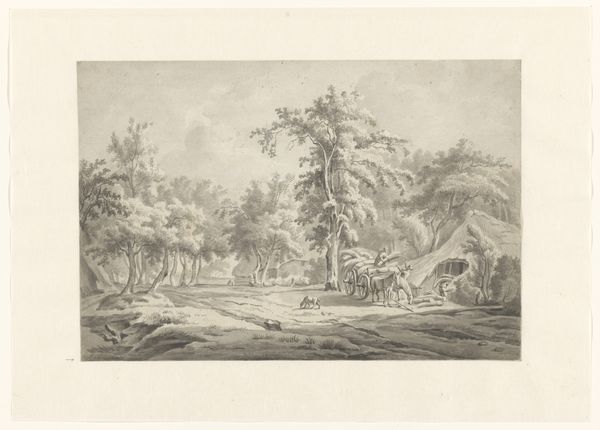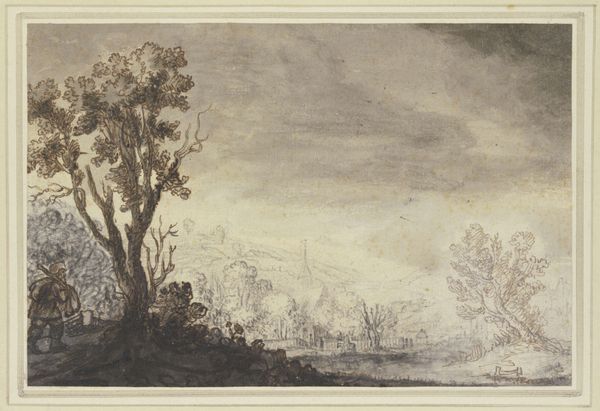
Ausgang aus dem Wald, links zwei rastende Wanderer in Mänteln
0:00
0:00
drawing, paper, ink
#
drawing
#
landscape
#
paper
#
ink
#
romanticism
#
15_18th-century
Copyright: Public Domain
Curator: Here we have an ink drawing on paper, residing in the Städel Museum, attributed to Johann Caspar Zehender. The artwork's title is "Ausgang aus dem Wald, links zwei rastende Wanderer in Mänteln," which translates roughly to "Exiting the forest, two resting wanderers in cloaks on the left." Editor: It feels like stepping into a charcoal dream. Everything’s muted, shrouded in a soft, melancholy light. Like the edge of a fairy tale, just as the spell begins to break. Curator: Zehender really captures the Romantic movement's fascination with nature and the sublime. Notice the placement of the wanderers; they're diminutive figures against the grandeur of the forest. The composition emphasizes human insignificance compared to nature's immensity. It certainly touches on core tenets of Romanticism. Editor: Yes, the travelers really anchor it. Are they weary, lost, contemplating... all of the above? It has this potent sense of in-between. Also the inky quality lends itself to that ambiguity—things fading at the edges, inviting introspection. Curator: Ink as a medium allowed Zehender to render precise details alongside broad washes of tone, look how the use of light is contrasted. This contrast adds drama, directing our eyes from the foreground figures towards the implied opening of the landscape. It’s a classic strategy to evoke the awe-inspiring potential of the natural world. Editor: It's an emotional technique as well. A real balancing act that pushes and pulls. And that sense of exiting... it speaks to something beyond a literal depiction, perhaps? Are they leaving behind troubles or on the cusp of encountering them? That liminal space... it fascinates me. Curator: Indeed. We often see art as representing ideas about national identity, personal faith and philosophical outlooks, as well. Landscapes such as this, provided space for social gatherings but also for the internal journeys which mirrored a moment of transformation. It makes me curious. Editor: Transformations do occur when art moves beyond illustration and become mirrors to each new viewer, over time, to witness those changing internal landscapes. And I realize now that I will go and see where it leads. Thank you. Curator: And thank you; together we explored another piece that encapsulates artistic transformation as well as emotional landscapes.
Comments
No comments
Be the first to comment and join the conversation on the ultimate creative platform.

